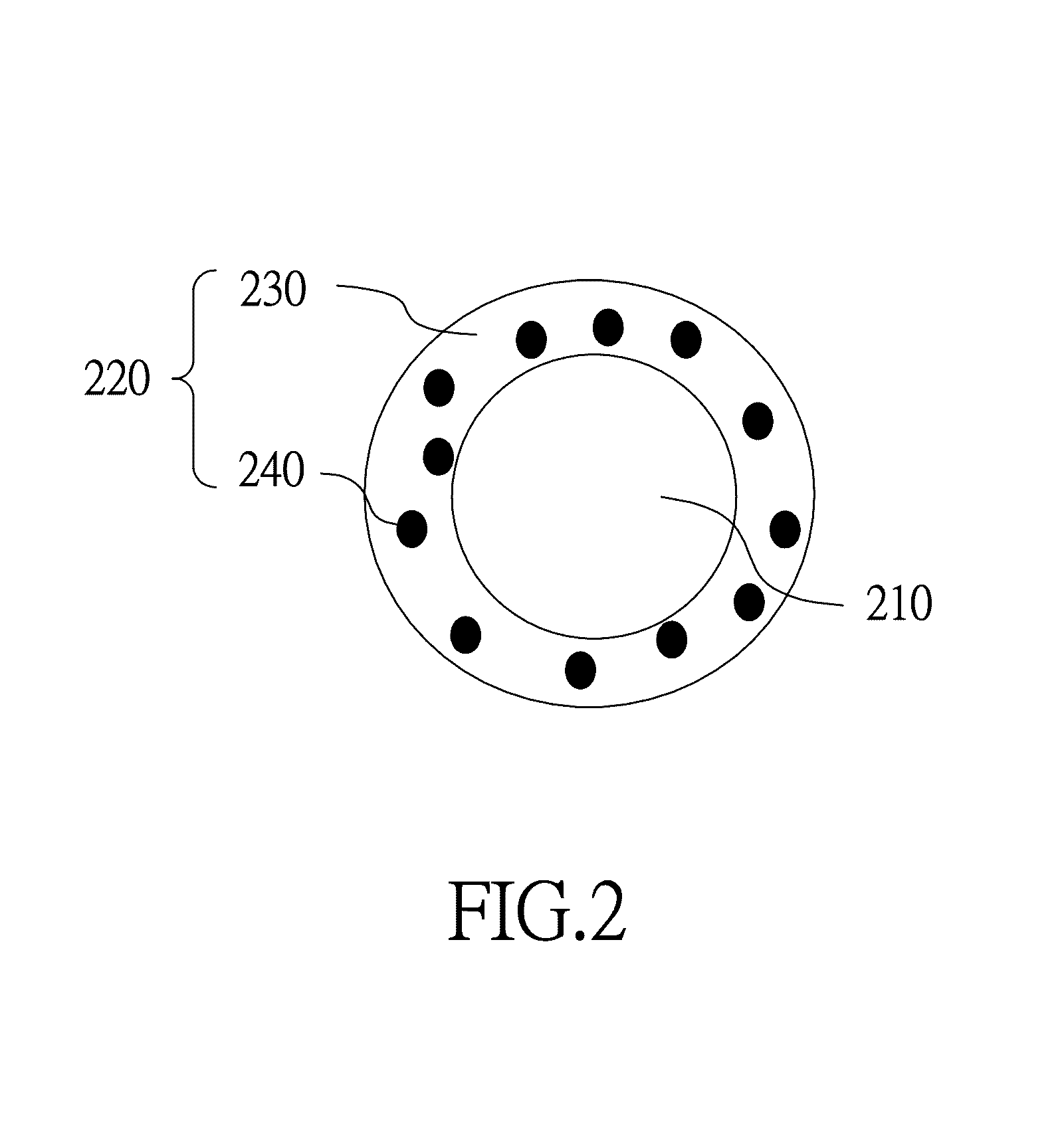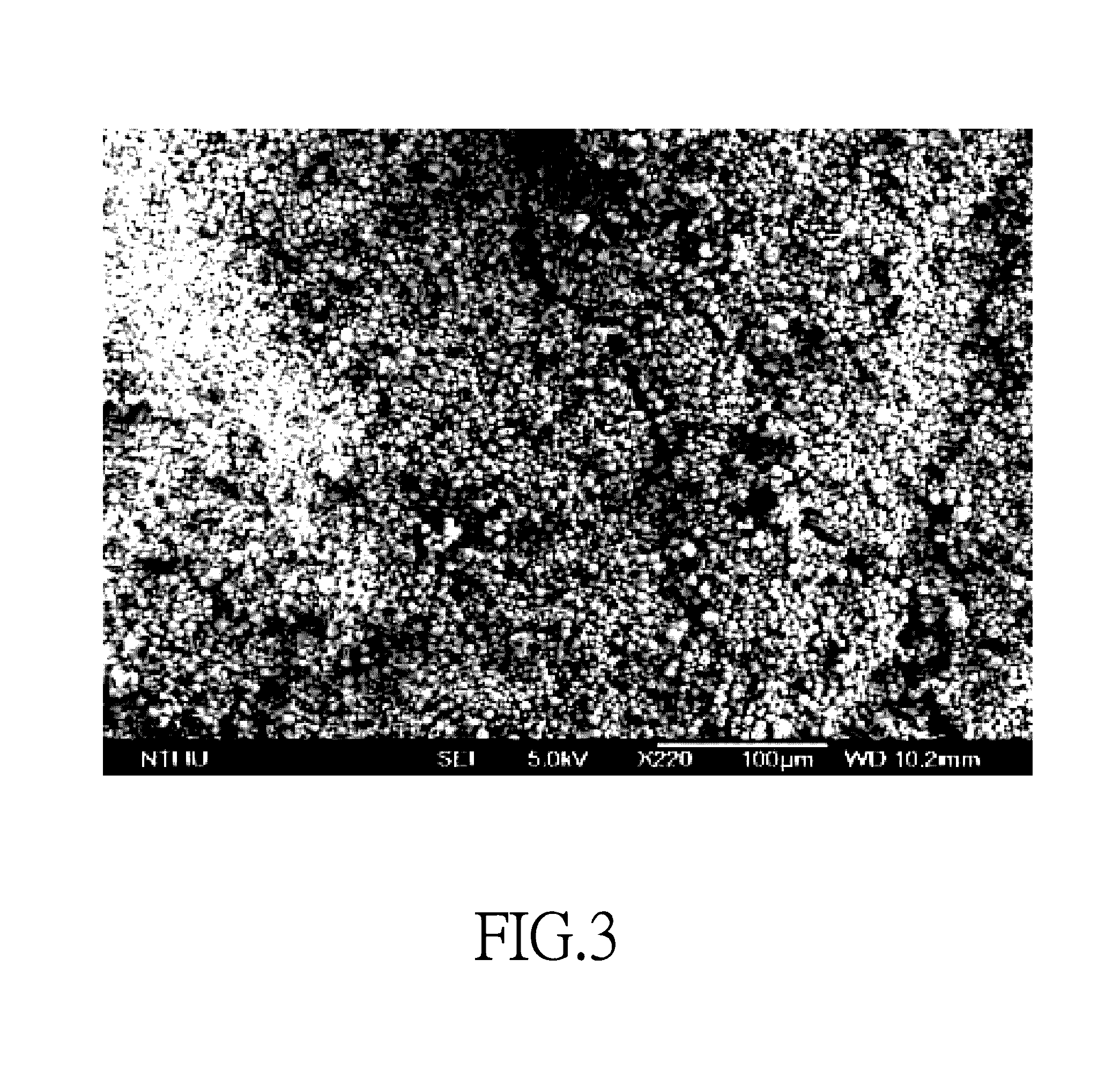Process for preparing phase change microcapsule having thermally conductive shell
a phase change microcapsule and thermally conductive shell technology, which is applied in the preparation of microcapsules, indirect heat exchangers, lighting and heating apparatus, etc., can solve the problems of reducing the life of materials, and achieve the effect of reducing heat transfer rate and low thermal conductivity
- Summary
- Abstract
- Description
- Claims
- Application Information
AI Technical Summary
Benefits of technology
Problems solved by technology
Method used
Image
Examples
embodiment 1
[0041]In the present embodiment, benzoyl peroxide was added in the methyl methacrylate, which was then heated in an oil bath to carry out polymerization and form the prepolymer solution. Paraffin (the organic phase change material) was separately added in the polyvinyl alcohol solution, which was then heated up to a temperature above the melting point of paraffin and stirred uniformly, wherein the weight ratio of paraffin to methyl methacrylate was 1:1. The prepolymer solution was then poured into the polyvinyl alcohol solution and stirred uniformly. Added ethylene glycol dimethacrylate and then stirred uniformly under heating in an oil bath. Took and dried the microcapsules in the upper layer after ice bathing, centrifuging, and filtering procedures to obtain the phase change microcapsules. The thermal conductivity of the microcapsules was measured to be 0.2000 W / mk.
embodiment 2
[0042]In the present embodiment, methyl methacrylate and the vinylsilane compound, trimethoxyvinylsilane, were mixed and heated at 60° C. in an oil bath, wherein the equivalent proportion of methyl methacrylate to trimethoxyvinylsilane was 5:1. Thereafter, benzoyl peroxide was added and then the mixture was heated in an oil bath to carry out polymerization and form the prepolymer solution. Paraffin (the organic phase change material) was separately added in the polyvinyl alcohol solution, which was then heated up to a temperature above the melting point of paraffin and stirred uniformly, wherein the weight ratio of paraffin to methyl methacrylate was 3:1. The prepolymer solution was then poured into the polyvinyl alcohol solution and stirred uniformly. Added ethylene glycol dimethacrylate and then stirred uniformly under heating in an oil bath. Took and dried the microcapsules in the upper layer after ice bathing, centrifuging, and filtering to obtain the phase change microcapsules....
embodiment 3
[0043]In the present embodiment, methyl methacrylate and the vinylsilane compound, trimethoxyvinylsilane, were mixed and heated at 60° C. in an oil bath, wherein the equivalent proportion of methyl methacrylate to trimethoxyvinylsilane was 5:1. Thereafter, benzoyl peroxide was added and then the mixture was heated in an oil bath to carry out polymerization and form the prepolymer solution. Paraffin (the organic phase change material) was separately added in the polyvinyl alcohol solution, which was then heated up to a temperature above the melting point of paraffin and stirred uniformly, wherein the weight ratio of paraffin to methyl methacrylate was 1:1. The prepolymer solution was then poured into the polyvinyl alcohol solution and stirred uniformly. Added ethylene glycol dimethacrylate and then stirred uniformly under heating in an oil bath. Took and dried the microcapsules in the upper layer after ice bathing, centrifuging, and filtering to obtain the phase change microcapsules....
PUM
| Property | Measurement | Unit |
|---|---|---|
| temperature | aaaaa | aaaaa |
| temperature | aaaaa | aaaaa |
| temperature | aaaaa | aaaaa |
Abstract
Description
Claims
Application Information
 Login to View More
Login to View More - R&D
- Intellectual Property
- Life Sciences
- Materials
- Tech Scout
- Unparalleled Data Quality
- Higher Quality Content
- 60% Fewer Hallucinations
Browse by: Latest US Patents, China's latest patents, Technical Efficacy Thesaurus, Application Domain, Technology Topic, Popular Technical Reports.
© 2025 PatSnap. All rights reserved.Legal|Privacy policy|Modern Slavery Act Transparency Statement|Sitemap|About US| Contact US: help@patsnap.com



